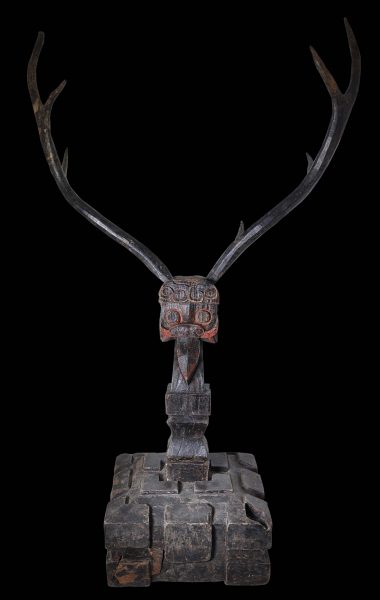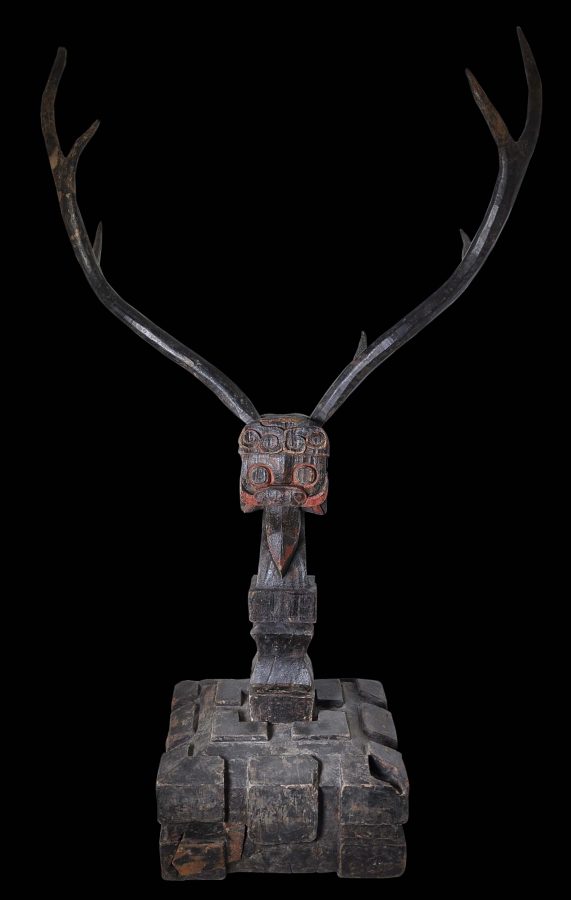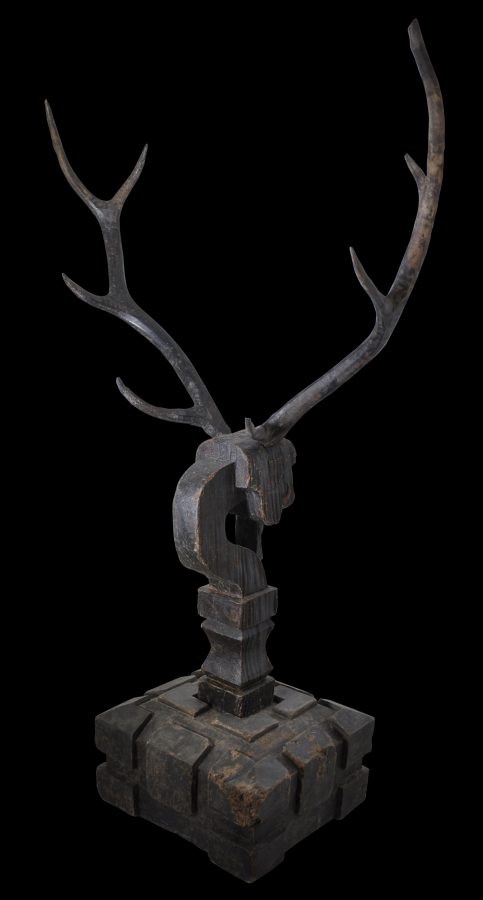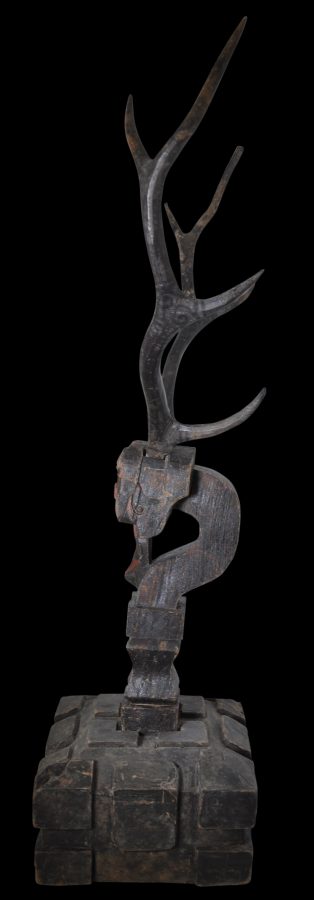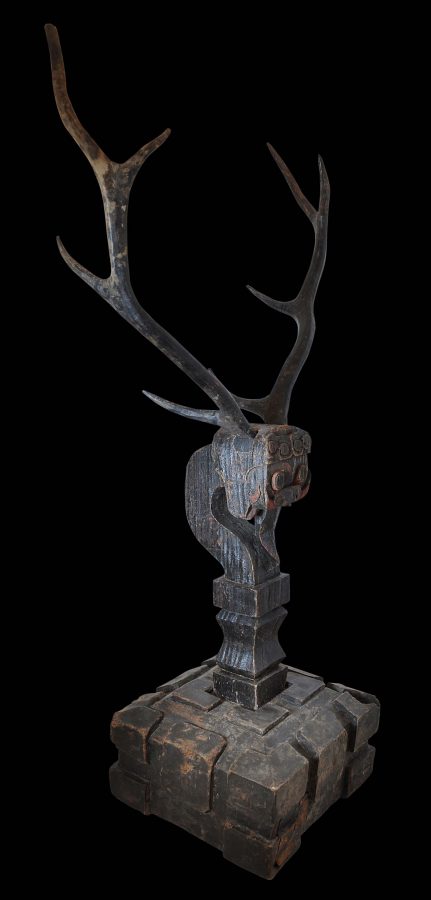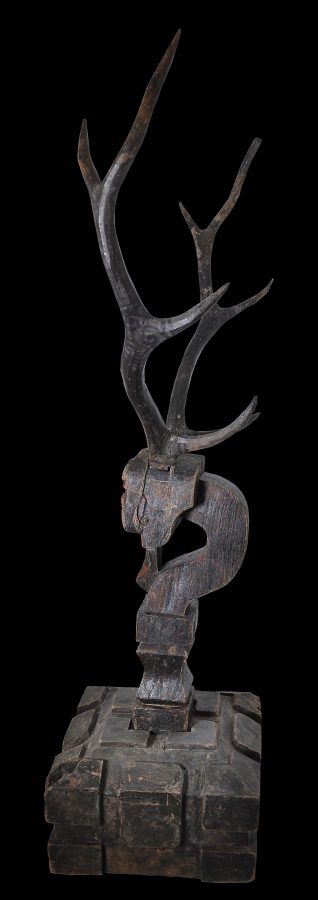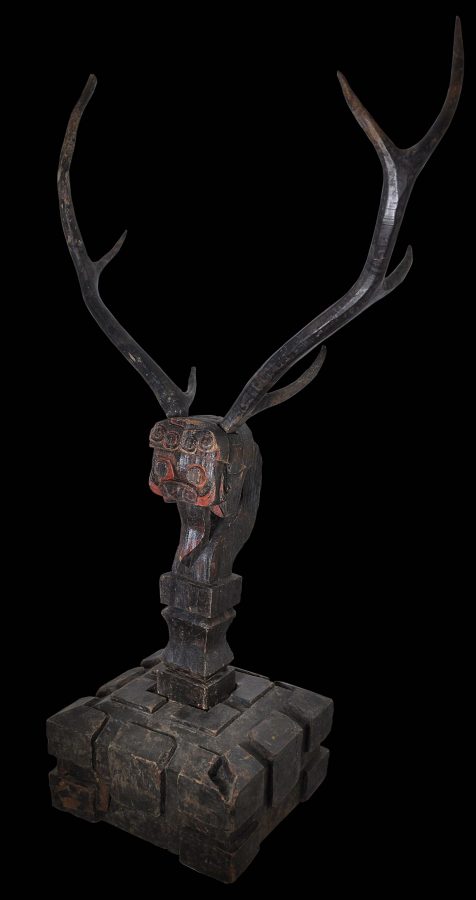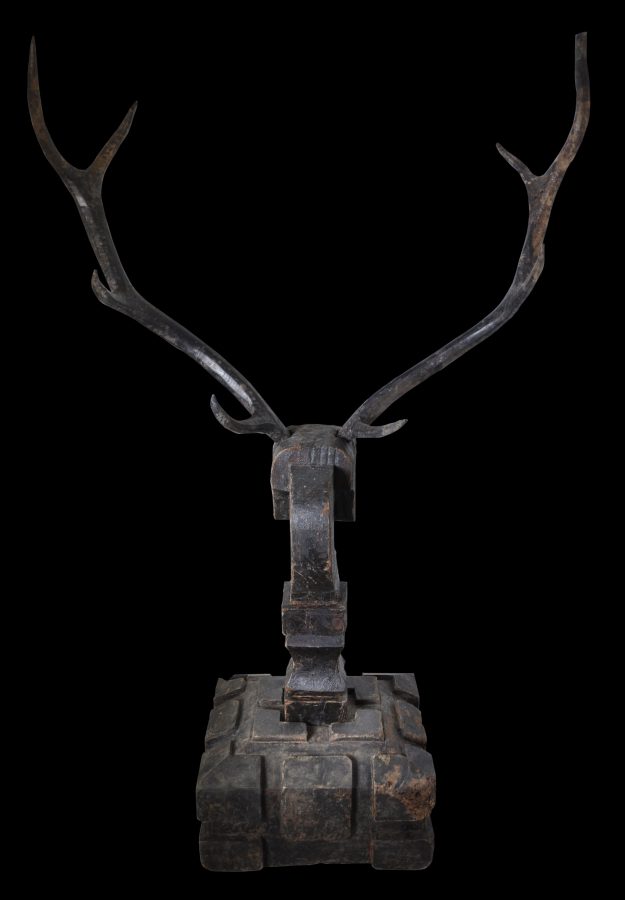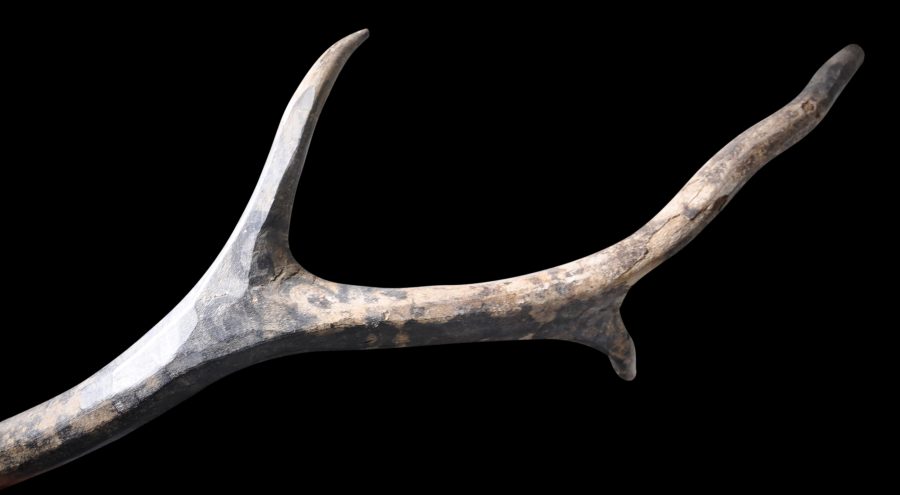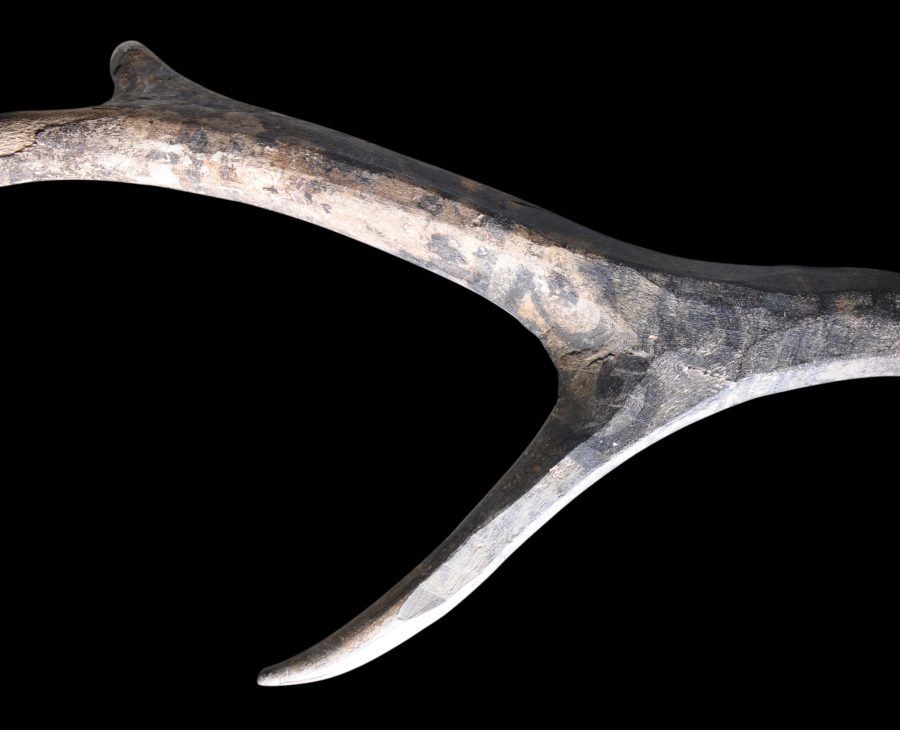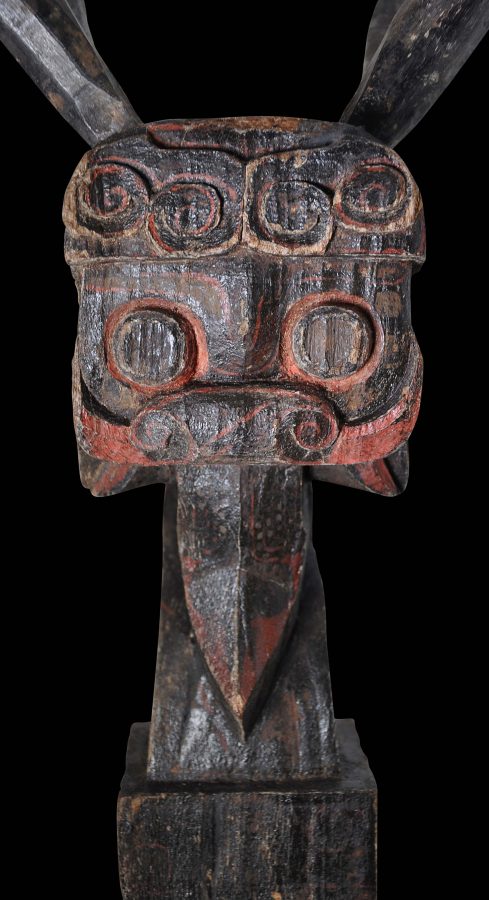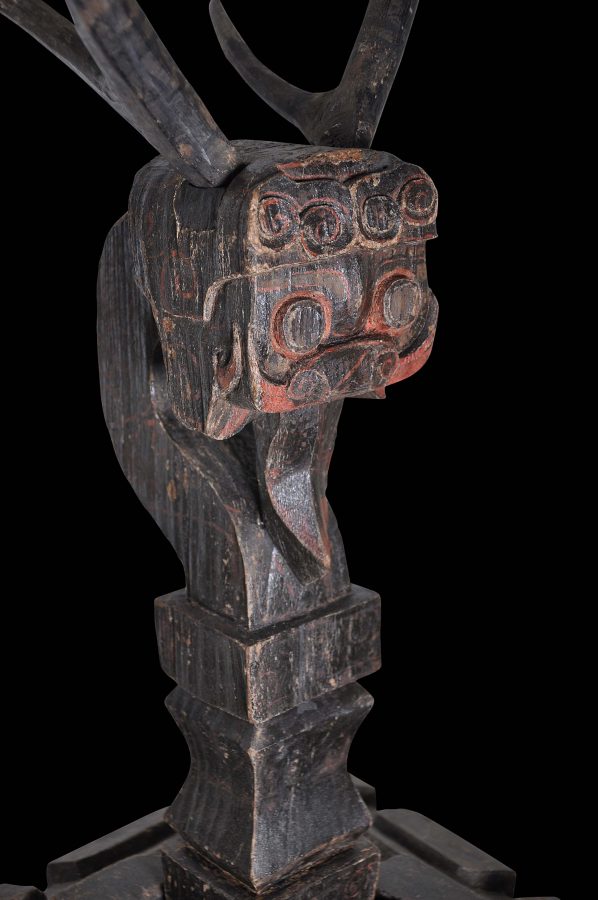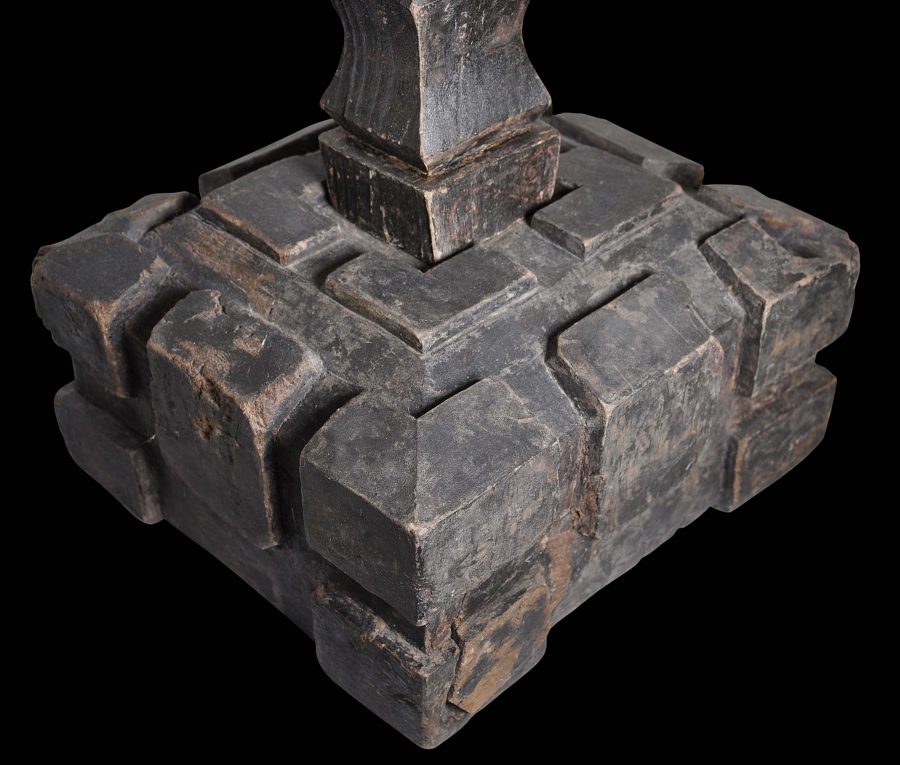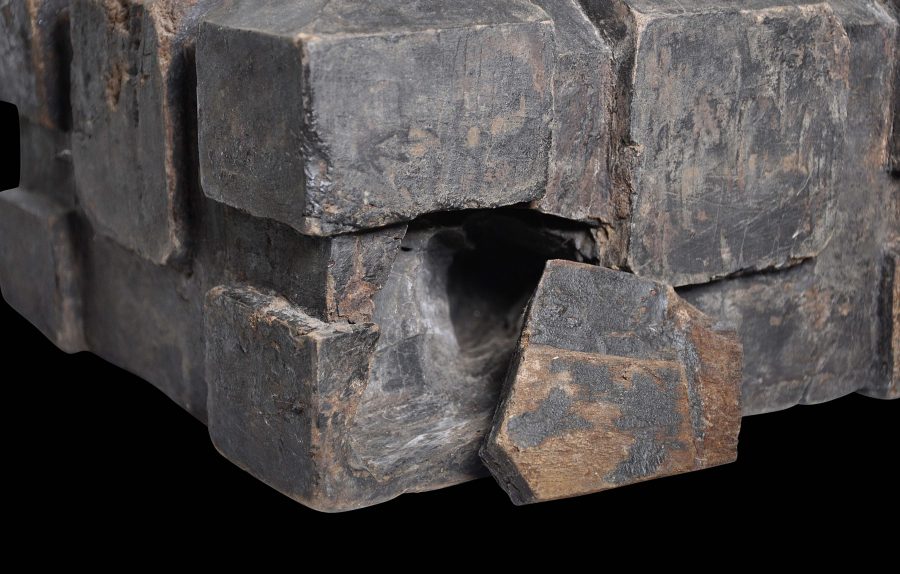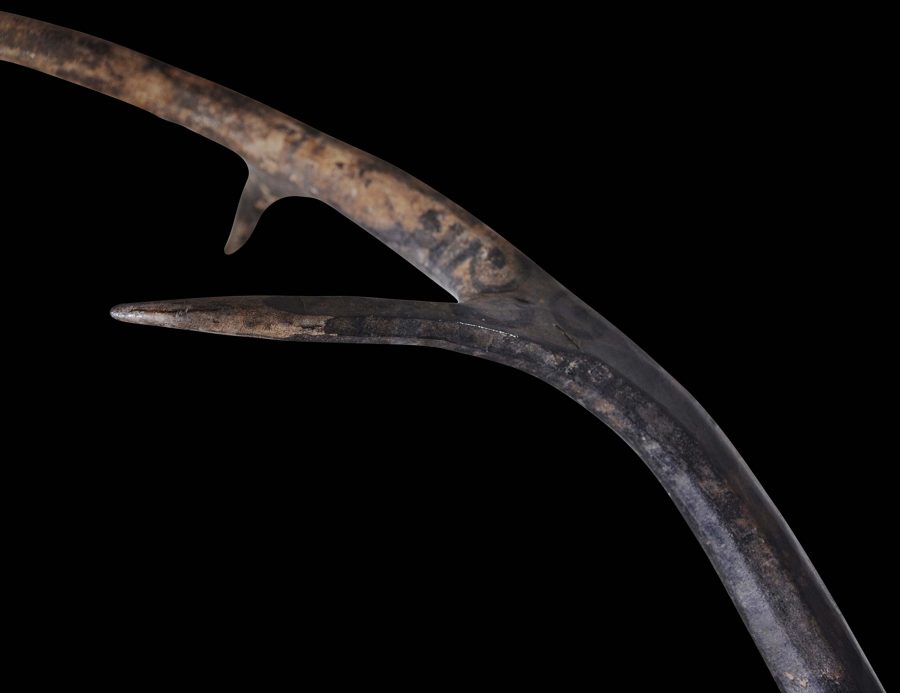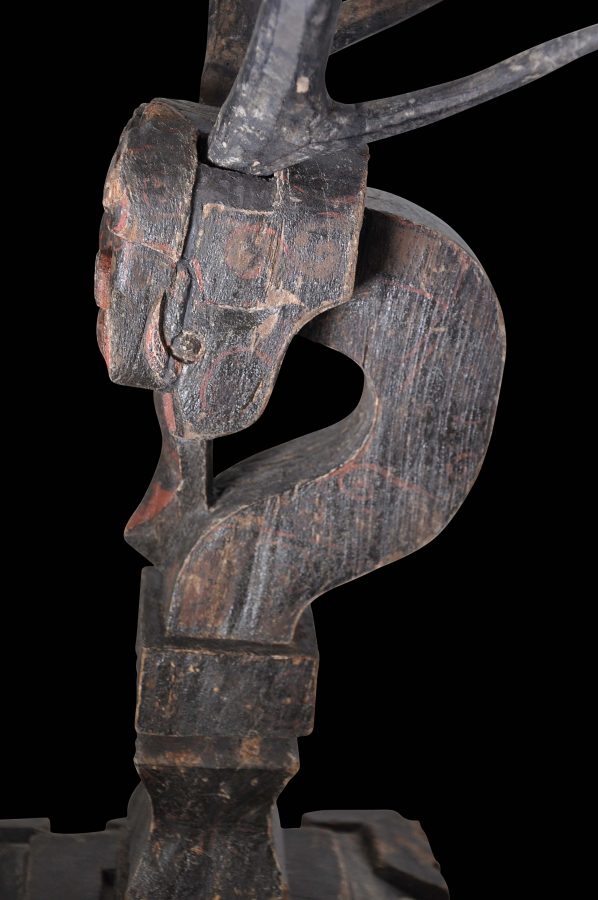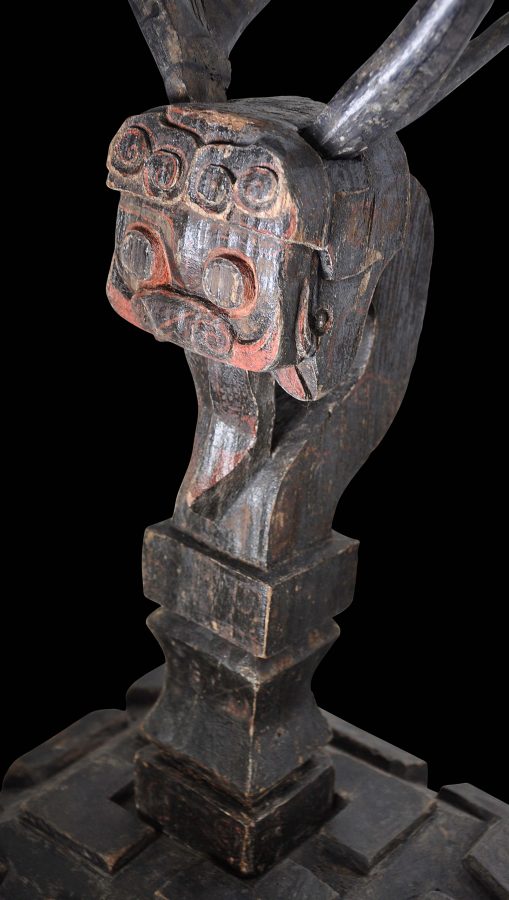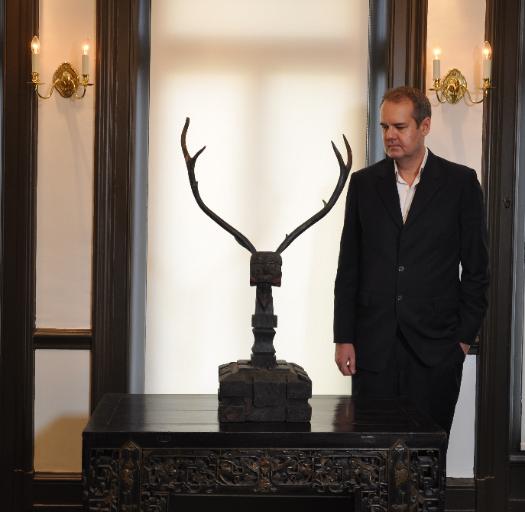This dramatic sculpture served as a tomb guardian for what was most probably a royal tomb during the Warring States period in southern China.
The sculpture comprises a square base with a central mortise into which the main upright tenon locates. A shaved stag antler is let into each mortise on either side of the head. The wooden substrate is painted with a thin coat of black lacquer, decorated with vermilion and yellowish pigments. The antlers have traces of black lacquer designs. Unusually, a chamber is cut into the front of the base.
Similar guardian figures appear to be of two types – those that derive from human forms such as an example in the British Museum or ferocious animal demons as in this example. All are composite figures characterised by the addition of horns and protruding tongues. As to their function, opinion amongst scholars is divided, however it is supposed that the figures suppress evil and act as protectors.
The lacquer tree, rhus verniciflua, indigenous to China, was cultivated and tapped for its sap. On exposure to light and heat, the sap changes in colour from milky grey to a transparent, brown, viscous liquid to which a limited range of pigments could be added. The lacquer was applied, to a chosen substrate – wood, pottery metal, leather, fabric etc, either as raw lacquer in thin layers or bulked with powdered bone, charcoal or other substances. Lacquer is a natural polymer and hardening occurs in the presence of oxygen, high humidity and temperature. The resulting surface is extremely durable and water-resistant.
The earliest examples of lacquer found in China, date to the mid-Neolithic period. During the subsequent Shan and Zhou dynasties lacquer design and technique continued to evolve, laying the foundation for a notable age of lacquer work during the Warring States period, the Qin and Han dynasties.
The rise of the southern state of Chu to pre-eminence, during the turbulent years of the Warring States, ushered in a period of extraordinary cultural and economic activity which sustained a prolific lacquer production of innovation and artistic brilliance.
Favourable environmental conditions have ensured the survival of substantial quantities of Chu lacquer. Due to high groundwater levels in the areas in which the tombs are found, most lacquer wares have absorbed water. However, the low porosity of the surrounding ground and the Chu practise of sealing timber lined burial chambers with special clays enabled stable, anaerobic conditions which preserved the material until the tombs were excavated.
Finds from these sites include – vessels for ritual and everyday use, musical instruments, furniture, coffins – some of these forms continuing into the Qin dynasty. Production of the distinctive Chu tomb sculpture – guardians, reclining deer, phoenixes supported on recumbent tigers and drum supports – ceases an the advent of the subsequent Han dynasty.
Related guardian figures are in the collections of the Museum of East Asian Art, Bath, UK; the British Museum; the Musée Guimet, Paris; and the Portland Art Museum, USA.
The guardian figure here has been professionally conserved to preserve and stabilise it. It is in a fine condition, one antler spike is blunted but otherwise is without significant losses or repairs. The holes into which the antlers are inserted have been reinforced to support the weight of the antlers. This is a necessary and not an unusual restoration given the wood shrinkage over the centuries.
Rarely do these tomb figures become available. One comprised lot 143 in Christie’s New York June 4, 1992 sale: ‘Chinese Ceramics and Works of Art’. It sold for US$35,000.
Radiocarbon Dating:
The wooden base has undergone light chemical treatment to protect and stabilise the wood. Radiocarbon dating has been undertaken on the antlers. The results are very strong results and fully support a Warring States era dating. A copy of these results (dated June 22, 2015) can be provided on request. The results show the following probable dates:
400BC to 373BC with a 68% confidence level.
406BC to 357BC, or 282BC to 256BC, or 243BC to 239BC – all with a 95% confidence level.
References
Lee, Y.K., Oriental Lacquer Art,Weatherhill, 1972.
Teng, R., Lacquer wares of the Chu Kingdom, The Woods Publishing Company, 1992.
Hu, S.C., et al, 2000 years of Chinese Lacquer, Oriental Ceramic Society of Hong Kong and Art Gallery and The Chinese University, Hong Kong 1993.
Shu, Z.,et al, War and Ritual, Empress Palace Museum, Singapore 1993.
Salmony, A, Antler and Tongue, Artibus Asiae, Switzerland 1954.


